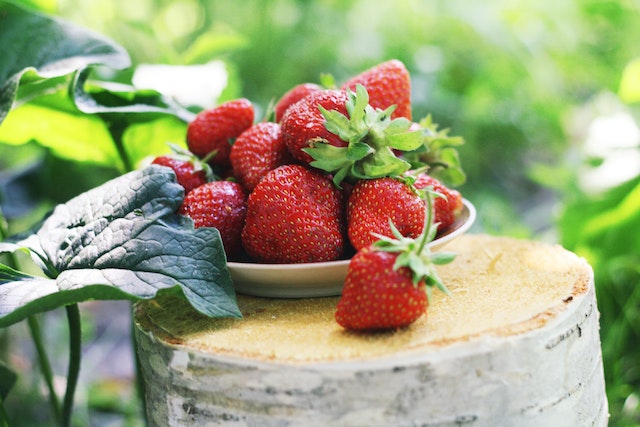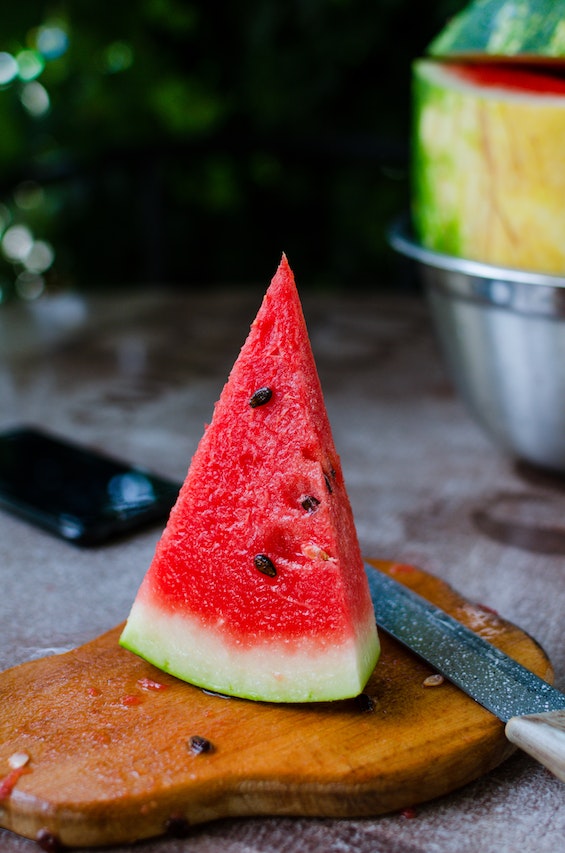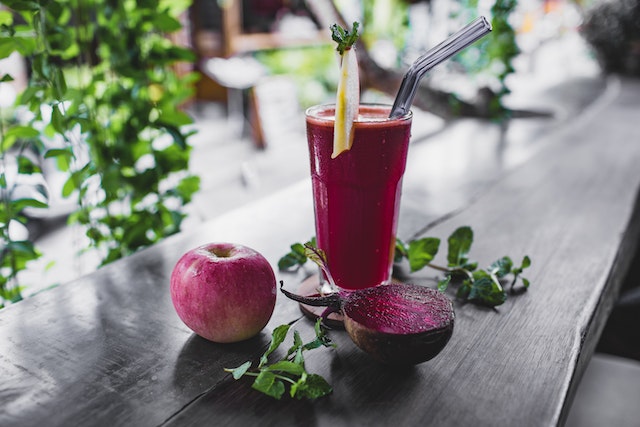
As a chef, I know that fresh ingredients make all the difference in creating delicious and satisfying dishes. And when it comes to ingredients that pack a flavor punch, fruits are a true gift from nature.
Not only are fruits vibrant and colorful, they are also incredibly versatile. From sweet and tart berries to juicy tropical fruits, there is a fruit for every occasion and every palate. Whether baked into pies and tarts, blended into smoothies and sorbets, or sliced up in salads and salsas, fruits make for a tasty addition to any meal.
But fruits aren’t just delicious and pretty to look at – they are also packed with health benefits. Fruits are naturally low in calories and high in fiber, making them a great addition to any diet. Plus, many fruits are rich in vitamins and minerals that are essential for maintaining optimal health.
Here are some of my favorite fruits to cook with and their unique qualities:
Bananas: Bananas are a great source of potassium, which is important for muscle and heart health. They are also naturally sweet and can be used to add flavor and texture in a variety of baked goods and smoothies.
Berries: Berries are packed with antioxidants, which can help protect the body from disease. They also add a sweet and tart flavor to desserts, breakfast dishes, and salads.
Apples: Apples are rich in fiber and vitamin C, and can be used in both sweet and savory dishes. Try adding diced apples to oatmeal or using them to add sweetness to a savory salad.
Mango: Mango is another tropical fruit that adds a burst of sweetness to any dish. It is also rich in vitamin C and can be used in dishes ranging from smoothies to chutneys.
Pineapple: Pineapple contains an enzyme called bromelain, which aids in digestion and can help reduce inflammation. It also adds a tropical sweetness to dishes like grilled chicken or fish.

Overall, fruits are a delicious and healthy addition to any meal. Whether you’re looking for a burst of sweetness, a pop of color or a boost of nutrition, incorporating more fruits into your cooking can bring endless possibilities to your kitchen creations. So go ahead, experiment with different fruits and see how their unique qualities can elevate your dishes to the next level.
Types of Fruits
Fruits can be categorized based on their botanical classification. Here are some categories along with examples of popular fruits in each:
Berries: Berries are juicy, sweet, and come in a range of colors. They are typically small and contain numerous seeds.
- Blueberries: These tiny berries are packed with antioxidants and are often used in pancakes, muffins, and other baked goods.
- Strawberries: Bright red and juicy, strawberries are delicious eaten raw or added to salads and desserts.
- Raspberries: These delicate berries have a tangy and sweet flavor and are great for making jams and preserves.
Citrus Fruits: Citrus fruits are a great source of vitamin C and are known for their tangy flavor and bright colors.
- Oranges: Whether eaten alone, juiced, or included in a recipe, oranges are a delicious source of vitamin C.
- Grapefruits: These citrus fruits are slightly bitter but have a refreshing taste. They can be eaten alone or used in salads.
- Lemons: Lemons add a bright and tangy flavor to sauces, marinades, and desserts.

Stone Fruits: Stone fruits get their name from their hard outer pit or stone. They are juicy and have a diverse range of flavors, from sweet to tart.
- Peaches: Peach season is not to be missed, with their sweet and juicy flesh used in desserts and salads.
- Plums: Plums are a great source of fiber and are deliciously baked into pies and cobblers.
- Cherries: These small fruits have a sweet and tart flavor and are wonderful in baked goods or as a topping for ice cream.
Tropical Fruits: Tropical fruits are typically grown in warm climates and have a sweet and juicy flesh. Examples include mangoes, pineapples, and papayas.
Pome Fruits: Pome fruits are characterized by a central core that contains seeds and a tough outer layer. Apples and pears are examples of pome fruits.
Melons: Melons are juicy and sweet fruits that come in a variety of shapes and sizes. Popular varieties include watermelon, cantaloupe, and honeydew.
Stoneless Fruits: Stoneless fruits are similar to stone fruits but do not have the tough outer pit. Examples include grapes and strawberries.
Exotic Fruits: Exotic fruits are unique fruits that are not commonly found in mainstream grocery stores. Dragonfruit, kiwi, and starfruit are examples of exotic fruits.
Seasonal Fruits
One of the best things about fruits is that they come in an ever-changing array of colors and flavors, depending on the time of year. Eating seasonally is not only an enjoyable way to experience the natural variety of fruits but also has numerous health benefits. Seasonal fruits are typically fresher, require fewer preservatives to transport them, and are more nutritious than their out of season counterparts.
Here is a list of some popular seasonal fruits and their benefits:

Summer Fruits
Watermelon: Refreshing and hydrating, watermelon is a summer staple. It’s also a rich source of lycopene, an antioxidant that can help protect against sun damage.
Peaches: Sweet and fragrant, peaches are rich in vitamin C, potassium, and fiber. They can be enjoyed fresh or grilled for a caramelized flavor.
Fall Fruits
Apples: Crisp and crunchy, apples are harvested in the fall and are perfect for baking into pies and tarts. They are also high in fiber and antioxidants.
Pears: Sweet and juicy, pears are a good source of fiber and vitamin C. They can be enjoyed fresh or baked into desserts.
Winter Fruits
Citrus fruits: Oranges, grapefruits, and tangerines are all citrus fruits that are in season during the winter months. They are packed with vitamin C and can help boost the immune system.
Pomegranates: Pomegranates are a winter fruit that is high in antioxidants and can help lower inflammation in the body.
Spring Fruits
Strawberries: Sweet and juicy, strawberries are packed with vitamin C, fiber, and antioxidants. They are also low in calories and a great addition to yogurt, smoothies, and salads.
Rhubarb: Rhubarb is a tart and tangy fruit that is perfect for making pies and jams. It’s also high in fiber and vitamins K and C.
Picking the freshest and ripest seasonal fruits
When it comes to incorporating fruits into your diet, selecting the right ones is key to ensuring their freshness and nutritional value. Eating seasonal fruits not only brings variety to your menu, but it also guarantees that you are eating produce at its peak flavor and nutritional value. Here are some tips to help you select the freshest and ripest seasonal fruits for your recipes.
- Choose fruits that are firm, not soft or mushy.
- Look for fruits with vibrant colors and no bruises or blemishes.
- Smell the fruit to ensure it has a sweet and fragrant aroma.
- Check the stem or cap of the fruit – it should be still attached and not dry or withered.
- If buying pre-cut fruit, choose packages with no discoloration or excess liquid.

Nutritional Value of Fruits
Fruits are not only tasty and versatile, they are also packed with a range of essential vitamins, minerals, and nutrients that are vital to maintaining good health. Here are some of the key nutritional benefits of fruits:
Fiber: Fruits are a great source of dietary fiber, which is important for promoting healthy digestion and regular bowel movements, as well as reducing the risk of colon cancer, heart disease, and other chronic illnesses.
Vitamins and minerals: Fruits are rich in vitamins and minerals, including vitamin C, vitamin A, potassium, and folate. These nutrients help to boost the immune system, protect against infections and diseases, and support healthy growth and development.
Antioxidants: Fruits are also rich in antioxidants, which are compounds that help to protect cells from damage caused by free radicals. Free radicals are unstable molecules that can contribute to the development of cancer, heart disease, and other health problems.
Low calorie density: Fruits are naturally low in calories and high in water content. This makes them a great choice for anyone who is trying to lose weight or maintain a healthy weight. Additionally, the fiber in fruits helps to promote feelings of fullness and satiety, which can prevent overeating.
Incorporating Fruits in Recipes
Adding fruits to your recipes is a fantastic way to introduce new flavors and textures to your dishes. The versatility of fruits allows them to be used in both sweet and savory recipes. Here are some ideas for incorporating fruits into your meals:

Smoothies: Fruits add natural sweetness to smoothies and can be added to any combination of ingredients, including milk, yogurt, and protein powder. Try blending frozen berries with yogurt for a refreshing smoothie bowl.
Salads: Fruits can add a pop of color and sweetness to salads. Try adding sliced strawberries to a spinach salad or diced mango to a quinoa salad for a burst of tropical flavor.
Sauces and dips: Fruits can be blended into sauces and dips for a unique twist on classic recipes. Try blending cooked apples with cinnamon and nutmeg for a twist on traditional applesauce, or mix mashed avocado with chopped pineapple for a sweet and savory dip.
Baked goods: Fruits can be added to baked goods for a natural sweetness and moist texture. Try adding diced apples to muffins or blueberries to pancakes for a delicious breakfast treat.
Grilled dishes: Fruits can be grilled for a caramelized flavor that pairs well with grilled meats. Try grilling pineapple rings alongside chicken or fish for a tropical twist on classic dishes.
Fruits are a true gift from nature that offer not only delicious flavors but also a wide range of health benefits. Whether you prefer sweet berries, tart citrus fruits or juicy tropical fruits, fruits can add color, flavor and nutrition to any dish. Eating seasonally is a great way to enjoy fresh and flavorful fruits at their peak, and incorporating them into your meals can be fun, creative and satisfying.
